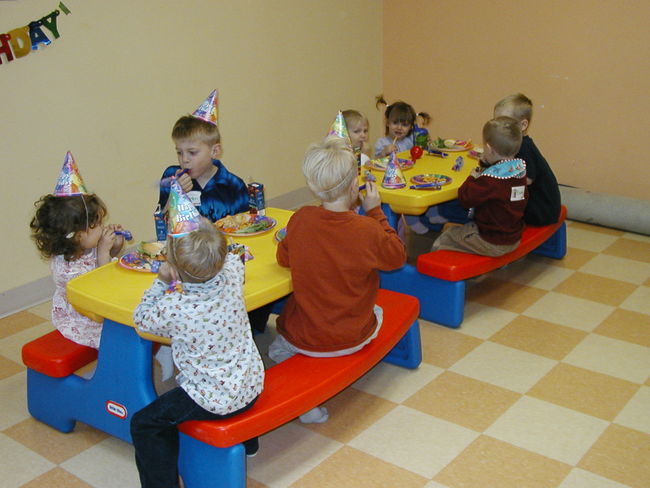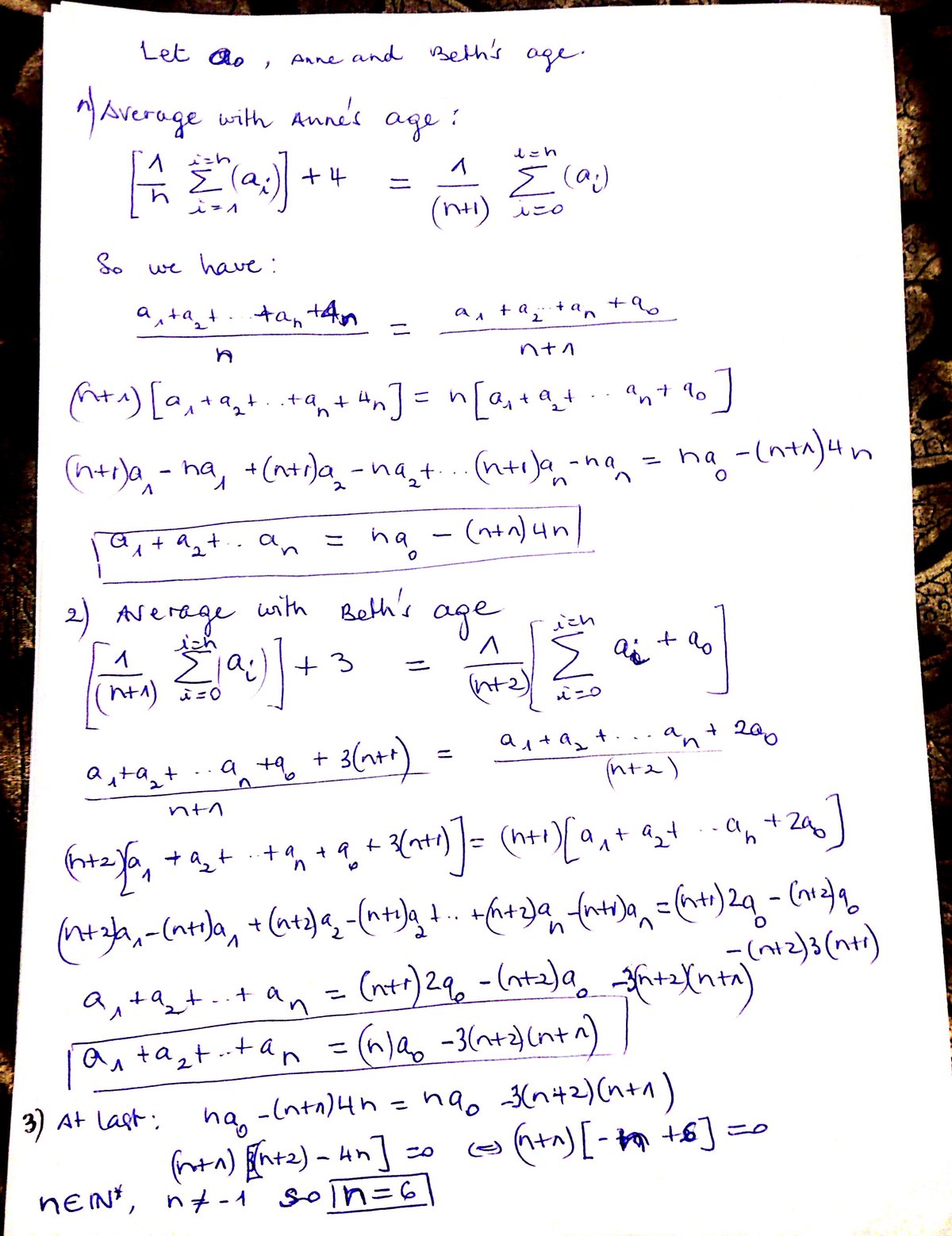How Many People Are In The Room?

When Anne walks into a room, the average age increases by 4. Then Beth walks into the room and the average age increases by a further three.
Beth and Anne were the same age. How many people were in the room beforehand?
The answer is 6.
This section requires Javascript.
You are seeing this because something didn't load right. We suggest you, (a) try
refreshing the page, (b) enabling javascript if it is disabled on your browser and,
finally, (c)
loading the
non-javascript version of this page
. We're sorry about the hassle.
4 solutions
Nice Logic Kartik. Thank You! For your Questions.
Wow. That's so neat! I have like 50 scribbles in each line...
Log in to reply
That's unnecessarily complex!
I can't write as beautiful as u r wow
Let x = number of people in the room beforehand
z=total age of people without Anne and Beth
y=average age of people beforehand
w=age of Anne=age of Beth
eq. 1: z = xy
eq. 2: z + w = (x + 1) (y + 4) OR z + w = xy + 4x + y + 4
eq. 3: z + 2w = (x + 2) (y + 7) OR z + 2w = xy + 7x + 2y + 14
simplifying eqs. 2 and 3 by elimination, we have
eq. 4: z = xy + x - 6
simplifying eqs. 1 and 4 also by elimination, we have
0 = x - 6
x = 6
Four times three divide by two equals six
This problem is way easier if, at first, you assume that the original average age in the room is 0. You can do so without loss of generality.
Let Anne's age be a and Beth's age be b and let there be n people in the room before Anne and Beth enter. Then the average after Anne enters the room is 4, so
n + 1 0 + a = 4
Which implies
a = 4 ⋅ ( n + 1 ) .
Then, Beth enters the room and the average becomes 4 + 3 = 7 , so
n + 2 0 + a + b = 7
Since Beth is the same age as Anne, b = a = 4 ⋅ ( n + 1 ) , substituting:
n + 2 2 ⋅ 4 ⋅ ( n + 1 ) = 7
Simplified:
n + 2 n + 1 = 8 7 , to which n = 6 is the obvious (and only) solution.
Thus, there must be 6 people in the room before Anne and Beth enter.
Why can you assume that the average is 0?
If the initial average age in the room were not 0, but, say, x , then we could just subtract x from all the ages of the people in the room, which would then mean the new average is 0. Then we could do the same calculation and add x to all ages after we've figured out the ages. Intuitively, the absolute value of the ages doesn't matter, just the age differences do, as implied by the question not mentioning any absolute values (which means the solution must be independent of what the exact ages are).

Relevant wiki: Mean (Average)
Let the average age of the people in the room = x
Let Anne / Beth's age = a
Let the people in the room = n
Now, we know that:
n + 1 n x + a = x + 4
This simplifies to:
n x + a = ( x + 4 ) ( n + 1 )
n x + a = n x + 4 n + x + 4
a = 4 n + x + 4
We also know that:
n + 2 n x + 2 a = x + 7
This simplifies to:
n x + 2 a = ( x + 7 ) ( n + 2 )
2 a = 7 n + 2 x + 1 4 .
If we substitute in the value of a determined previously, then the resulting equation is:
2 ( 4 n + x + 4 ) = 7 n + 2 x + 1 4
8 n + 2 x + 8 = 7 n + 2 x + 1 4
n + 8 = 1 4
n = 6